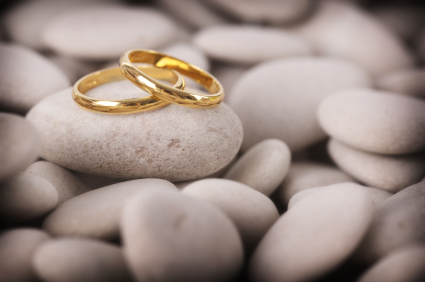Gold has a spot price value, measured in dollars. We can look at that each day and, recently, we can watch it rise and rise, seemingly with no end in sight.
But gold’s value isn`t always measured just in dollars. And that’s what makes it such an interesting, complex and sometimes confusing asset.
For example, in our daily lives we rarely see gold in the form of bullion. But we do see it in the form of jewelry. Gold in the form of jewelry has an intrinsic value quite separate from its spot price value.
Here in the West we wear gold as decoration, and maybe as a sign of wealth. It is also combined with an emotional component, like when we buy a wedding ring, for example.
Elsewhere in the world, gold has deep cultural and even religious associations. In fact, the summer wedding season in India alone almost always results in a jump in buying activity, to the degree that it can impact world gold prices.
A weird asset indeed. How many stocks do you own that are impacted by the wedding season?
Then you have the investors who invest in gold as a means to make quick profits. They don’t care that it’s gold. It could be oil or pork bellies for all they care. It’s just an investment class that allows them to speculate and, hopefully, make some profits.
Next, you have sovereign states, institutional investors and individuals who buy gold not with a view to making short term profits, but simply for security. They view gold as an asset that provides them with a safe haven for at least a proportion of their wealth. They don’t buy it as jewelry, but in the form of coins and bars. And, its beauty notwithstanding, these coins and bars rarely see the light of day. They are hidden away in some form of secure storage or another.
Overlaying all of these different views on the intrinsic value of gold is the fact that our favorite yellow metal also stimulates a lot of emotion. Gold “bugs” are evangelical in their zeal in a way that would simply never happen with pork bellies. Gold “bears” often view gold as a totally unreliable asset, to be avoided at all costs.
This all ties back to the history of gold, the beauty of gold and the multitude of variable values assigned to it.
For yourself, you need to ask yourself about your own view of the intrinsic value of gold.
Are you buying gold to wear it? Or to profit from it? Or as a way to keep some of your wealth safe during turbulent times?
Next, try to strip away the emotions that surround gold. Try to be objective when it comes to buying and selling.
As soon as you have clarity over why you are buying gold, you will make smarter choices when it comes to buying and selling.


